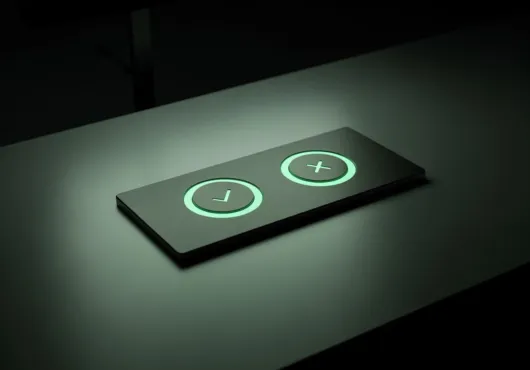(“Sorry, Your Honor—YouTube told me to do it.”)
Like What You Read? Dive Deeper Into AI’s Real Impact.
Keep Reading- “Algorithmic alibi” = defendants claim recommender systems nudged them into crime.
- Legal success is rare (intent still matters), but platforms now fear liability audits.
- Prepare for a future where your watch history could be subpoenaed right next to your fingerprints.
Courtroom Cold-Open
Picture a defense attorney in a charcoal suit pointing at a flatscreen playing a TikTok FYP:
“Ladies and gentlemen of the jury, my client didn’t radicalize himself—the autoplay did.”
Welcome to the era of the algorithmic alibi, where bad actors swear they were just passive passengers on the Platform Express to Doomville.
How We Got Here: From Suggested Cats to Suggested Crimes
| Year | Platform Pivot | Dark Side Upgrade |
|---|---|---|
| 2011 | “Watch Next” shows more cat videos | Mild sleep deprivation. |
| 2016 | Infinite scroll + autoplay | Spiral into flat-earth karaoke. |
| 2021 | Hyper-personalized “For You” loops | Conspiracy speed-runs, extremist merch links. |
| 2025 | Real-time behavioral nudging | Defendants claiming “the algo made me buy bolt cutters.” |
Recommendation engines started as engagement crack; now they double as plausible-deniability dispensers.
Meet the Early Test Cases
The DIY Bomb Squad Wannabe
Binge-watched “fireworks gone wrong” → served “amateur chemistry” → ended up on a watch-list. Defense: “I was researching pyrotechnic art!”
Crypto Rug-Pull Bro
YouTube fed him get-rich-quick shorts. He launched a token, rugged followers, pled guilty—then blamed “financial influencers the algo wouldn’t stop showing me.”
Anti-Vax Facebook Aunt
Claimed her feed “weaponized my concern for children.” Lawyer tried to cite algorithmic emotional manipulation as mitigating factor in a fraudulent GoFundMe scheme.
Spoiler: juries weren’t amused—but appeals are pending.
The Logic of the Algorithmic Alibi
Premise: Platform X maximizes watch-time.
Reality: Extreme, fringe, or criminal content = sticky eyeballs.
Conclusion: I didn’t choose law-breaking; the model optimized me into it.
It’s “the Twinkie defense” rebranded: blame caloric recommender sugar instead of sugary snacks.
Can This Actually Work in Court?
Legal Hurdles
Mens rea (intent): Algorithms can’t absolve conscious planning.
Foreseeability: You clicked “play” 42 more times—kind of on you.
Causation: Must prove the feed was the proximate cause, not just background noise.
But There’s Precedent Creep
Product liability cases over violent games.
Social-media damages suits (teen mental-health crises).
Data-driven ad discrimination settlements.
Translation: Juries are warming to “the machine nudged me” narratives—especially when platforms look sloppy.
Platform Panic: The Arms Race to Negate Alibis
| Defense Move | Platform Counter |
|---|---|
| “The feed radicalized me.” | New TOS pop-up: “Content may warp your worldview—proceed?” |
| “Autoplay trapped me.” | 15-minute ‘Are you still watching?’ prompts (Hit Yes angrily). |
| “I thought tutorials were legal.” | Added disclaimers: “Educational purposes only; don’t explode stuff.” |
Risk teams now design litigation-shield UX—less to protect you, more to dodge subpoenas.
What This Means for Everyone Else
Creators: One edgy thumbnail away from being Exhibit A.
Users: “Suggested videos” could end up evidence of intent.
Lawyers: Get ready to depose data scientists who speak in logits.
Policy Wonks: Expect calls for recommender algorithm audits—good luck prying open that black box.
Final Verdict
Algorithms don’t pull triggers, file fraudulent taxes, or stash crypto loot. But they do hand some people the blueprint—and maybe the moral permission slip. Blaming the feed won’t clear your record, but it will drag Big Tech into court with you. And that, dear defendants, might be the only strategy more addictive than autoplay.



